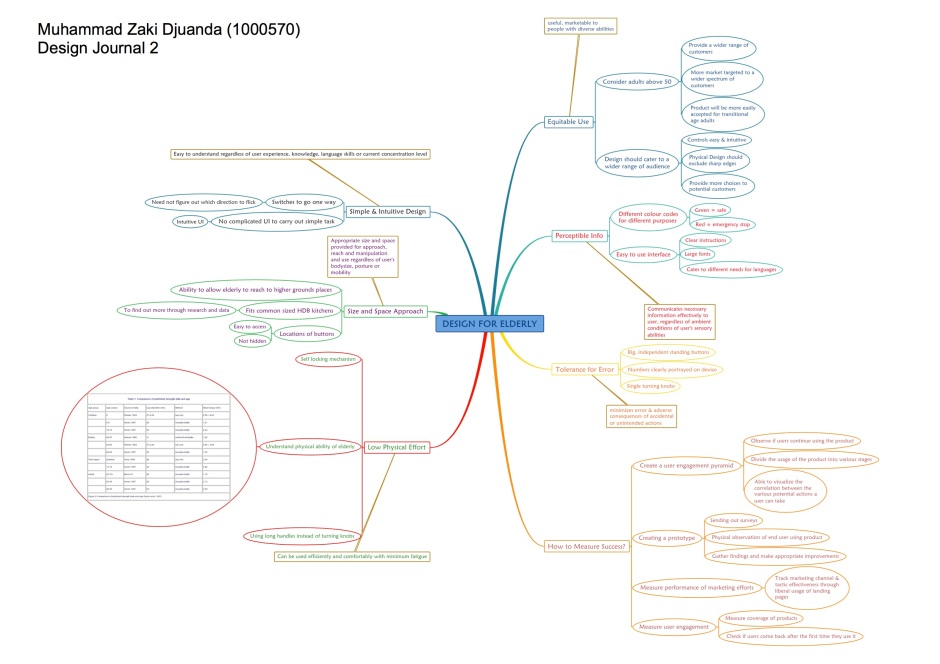Results from the interview we had with our own family members:
Summary of findings:
Cooking Habits
| |
Ideation and Shopping |
Storage |
Food Preparation |
Cooking |
Post-cooking |
| Student, 20+ |
Search for recipes online and only buys what is required from the supermarket |
Compartmentalise before storing. |
Multitasking cleaning up and food preparation |
Washes up after every dish, usually one dish at a time. |
Washes utensils and cutlery by hand rather than dishwasher |
| Student, 20+ |
Does not cook |
| Working Mum, 30+ |
|
|
|
|
Post-cooking cleaning up is a deterrent hence does not cook often |
| Working Mum, 50+ |
Buys staples and anything that is on offer at the wet market, ideate based on ingredients bought daily |
Compartmentalise before storing to save fridge space. Takes 1-1.5h, most tiring process |
Faster process because some preparation done during storage step. |
Cooks fast meals. A lot of multi-tasking involved. |
Scrub walls and mop floor after cooking.
Washes utensils and cutlery by hand |
| Mum, 50+ |
|
|
|
|
Post-cooking cleaning up is a deterrent hence does not cook often |
| Mum, 50 + |
Tries out recipes, goes to the market to buy what is required |
|
|
|
Cleaning up is the most troublesome part of cooking |
| Mum, 60+ |
|
|
Needs a lot of counter space, alternating between washing up and preparing ingredients |
Manage cleaning up and cooking at the same time
Prefer cooking fast meals (30min cooking time) |
Cleaning up tedious because many surfaces to clean (hood, wall, table, floor). Wipe walls, mop floor after cooking.
Washes utensils and cutlery by hand |
| Aunt, 60+ |
Buys staples and anything that is on offer at the supermarket, ideate based on ingredients bought |
|
|
|
|
| Grandma, 70+ |
Plans meals and buys groceries from the wet market on the day itself |
|
Long process because prepares meals from scratch |
Cooks once a week for >6 pax
|
Scrub walls and mop floor after cooking. |
| Grandparents, 80+ and 90+ |
Does not cook |
|
|
|
|
Cleaning Habits:
| |
Room Floors |
Wall / Windows |
Furniture / Installation |
Toilet Surfaces |
| Student, 20+ |
|
Helps clean hard-to-reach areas |
|
|
| Student, 20+ |
Use MagiClean mop everyday |
|
Uses baby wipes on tables and chairs |
|
| Working Mum, 30+ |
Vacuum and mop 2 times weekly. Tiring because a lot of bending required. |
|
|
|
| Mum, 50 + |
Vacuum and MagiClean mop
2-3 times weekly |
Windows most difficult part to clean |
|
|
| Mum, 50+ |
|
|
|
Scrubs and chemicals |
| Working Mum, 50+ |
Use MagiClean and wet wipes everyday |
|
|
Scrubs floor with stick brush and water, uses chemicals for toilet bowl daily |
| Mum, 60+ |
MagiClean everyday
Brooming and Mopping 2-3 times weekly |
|
Wipe with cloth. Ceiling fans the most troublesome to clean.
Vacuum curtains. |
Scrubs and Chemicals for floor daily
Chemicals for toilet bowl daily |
| Aunt, 60+ |
Sweeps and mpops the house everyday |
|
|
|
| Grandma, 70+ |
Sweeps the house and scrubs the floor by hand daily |
|
|
Scrubs floor 3 times weekly |
| Grandparents, 80+ and 90+ |
Does not do chores |
|
|
|
From meeting minutes:
Angel’s Mom: 50+ years old
Angel’s mom likes to cook. For ideation, she tries recipe. She goes to the market and gets recommendation. One reason why she doesn’t cook is the cleaning process. She sometimes lazy and don’t want to cook cause of this.
Cleaning is okay in general. Vacuum + Magicclean. The most difficult part is outside the windows. Backaches.
Pris’ Mom, 60
Food Storage: no issues
Food Preparation – a lot of things to do, insufficient counter space
Cooking – alright
Post-cooking is the worst. the hood gets oily. wall gets oily. space constraint. so many things to clean.
Interesting thing – for toilets it’s not difficult to clean, it’s just something people don’t like.
rooms wise – ceiling fan and curtain
Floor – only mop 2/3 times a week
As she gets older, she’ll get lazy to cook but if need to cook for family, she’ll just cook loh.
Cleaning – dealing with slippery floors.
Serena, 30+
Cleaning: uses vacuum Cleaners + mop
She vacuums twice a day over the weekend.
She needs to bend down a lot while vacuuming. A lot of bending done in the process.
She doesn’t cook because she doesn’t like the post-cooking process.
YQ, 22
Cooking: Look for recipes online. Check what is needed and go for grocery shopping. YQ unpacks the grocery, she doesn’t know what needs to be left outside and what needs to be put inside.
Food preparation is quite fun. Defrosting food, preparing and cutting things.
Cooking: we always start with soup, it requires a lot of multitasking (yq cannot). As she cooks, YQ washes. Washing is therapeutic to her.
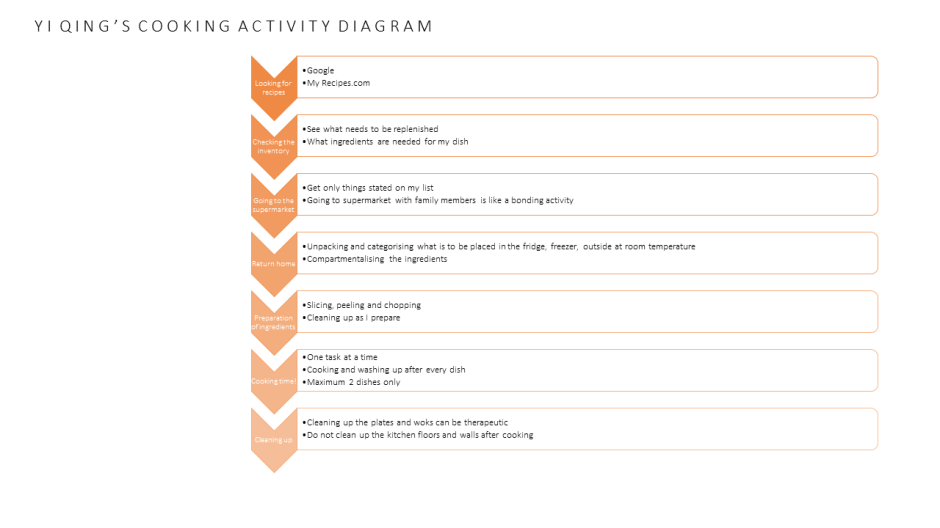 Cleaning:
Cleaning:
YQ sweeps the hair on the floor (by hand) and then she magic cleans the floor.
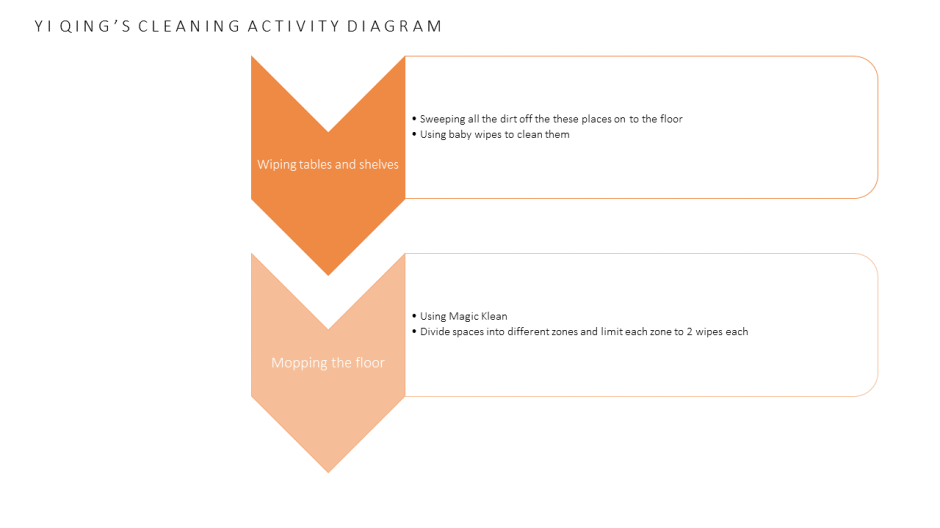
YQ’s Mom, 50+
She works from Mon – Sat
She goes to the wet market. She looks for what’s the cheapest and she’ll buy. Usually buys staples.
She preps the vegetables into containers. Saves space in the fridge. She takes 1 – 1.5 hrs. Kitchen has not fan. That’s the most tiring for her.
She cooks fast meals. She asks for suggestions then she’ll get inspiration from them and she cooks. She multi tasks alot.
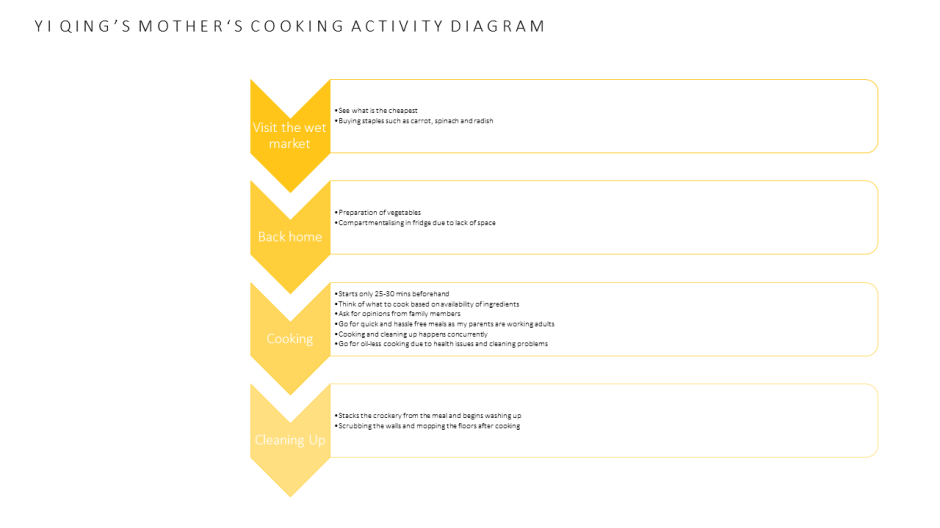
YQ’s mom magic cleans everyday. They hire external help on weekends.
Washing toilet – she just scrubs.
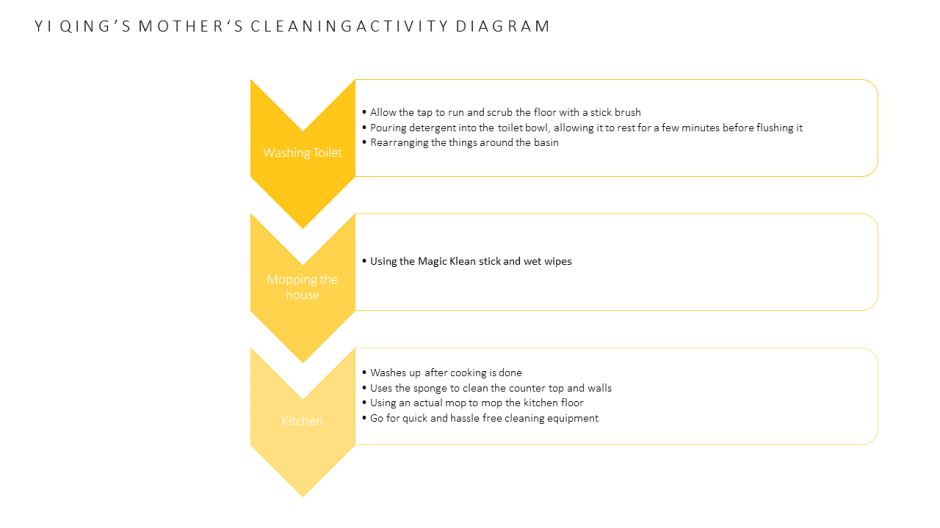
YQ’s Ahma, 74
She cooks on Saturday for >6 people.
She has a set of recipes in her mind.
She goes for grocery shopping, come back and start cooking.
If lunch is served at 1, she starts cooking at 10!! Alot of prep.
Kitchen space is alot. Ahgong prepares food on the floor.
She resists help. Her seasoning is based upon feeling.
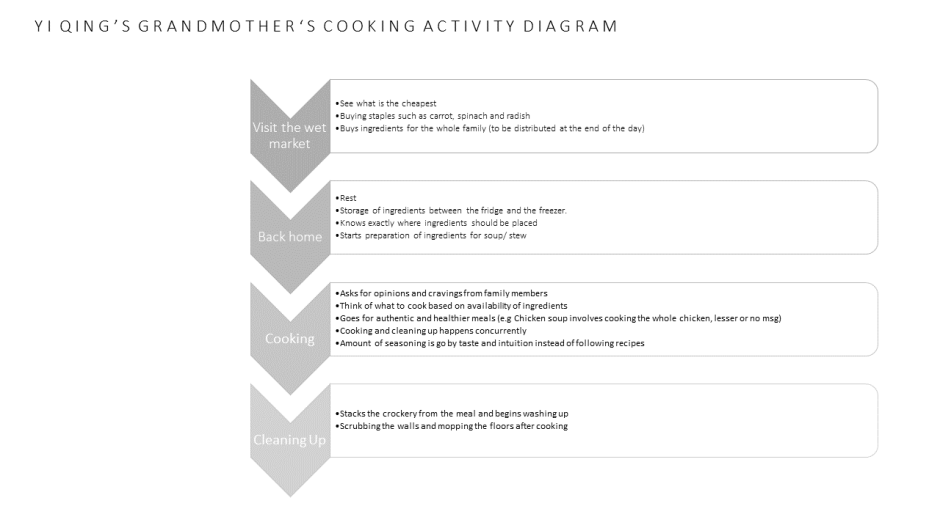
Cleaning:
Ahma sweeps the whole house the entire day.
Hand scrub the floor.
Throughout the day, if they see stains or hair, they’ll clean mid day.
General toilet is washed three times a week. Sit on the stool and still scrub.
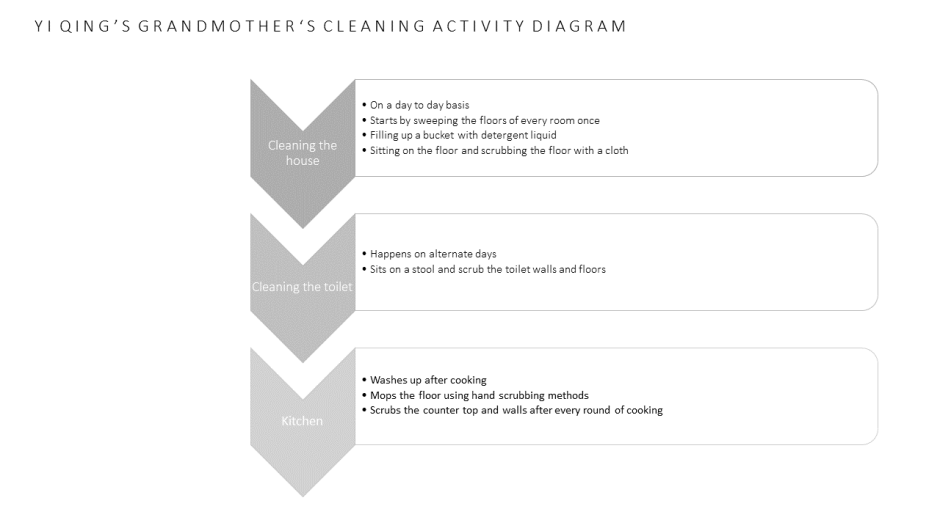
Glen, 24
His house doesn’t really clean. Glen and his bro cleans the house.
Glen’s mom, 51
Sometimes cleans the toilet. She hand cleans the whole toilet.
Doesn’t cook because cleaning is difficult.
Glen’s grandparents, 86 & 91
Too old to do chores. Grandmother stopped cooking cause knees hurt.
Glen’s aunt, 63
Does the chores, they’re elderly but do not live like elderly
Will go to the market/supermarket, she buys stuff. And she likes to do her own recipes.
Cleaning: broom + mop
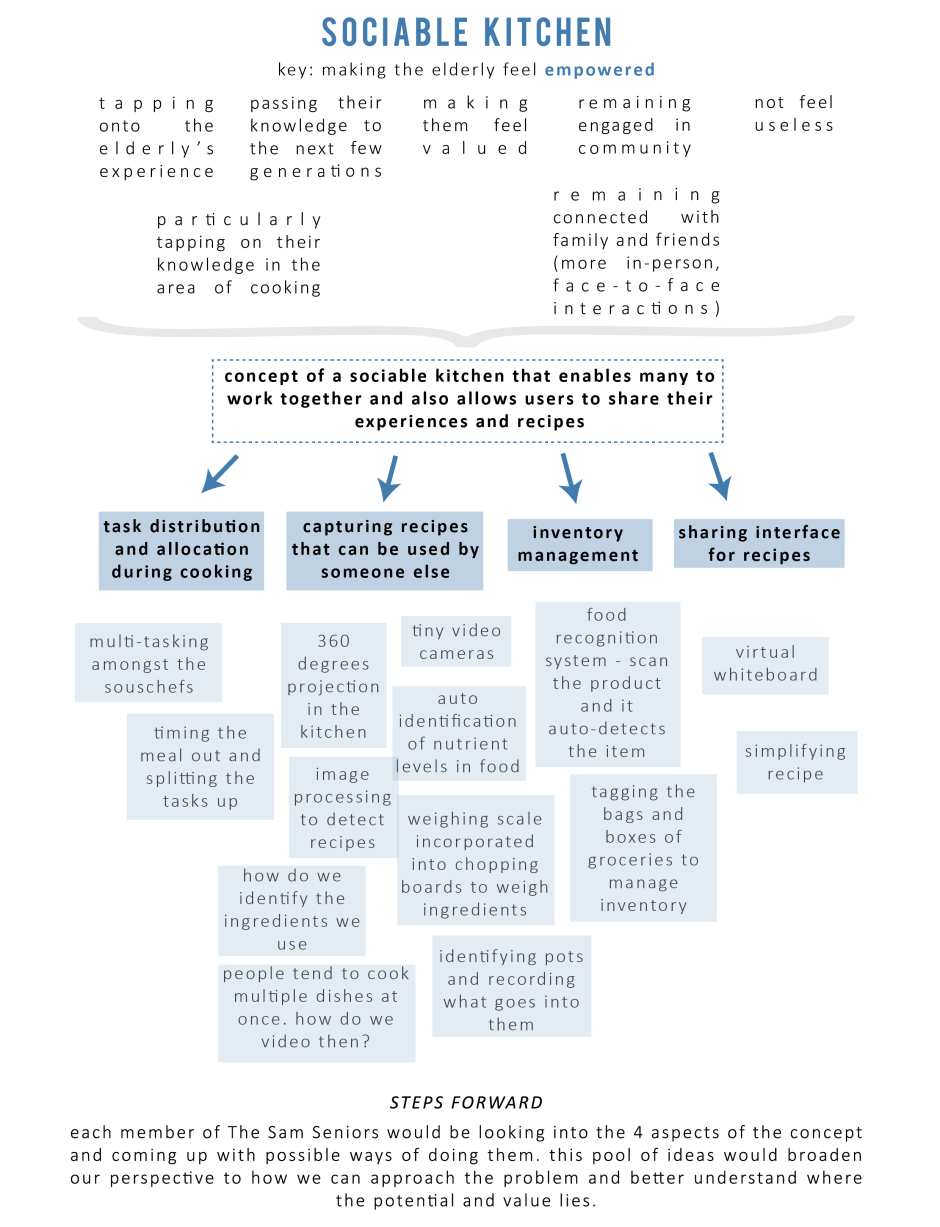














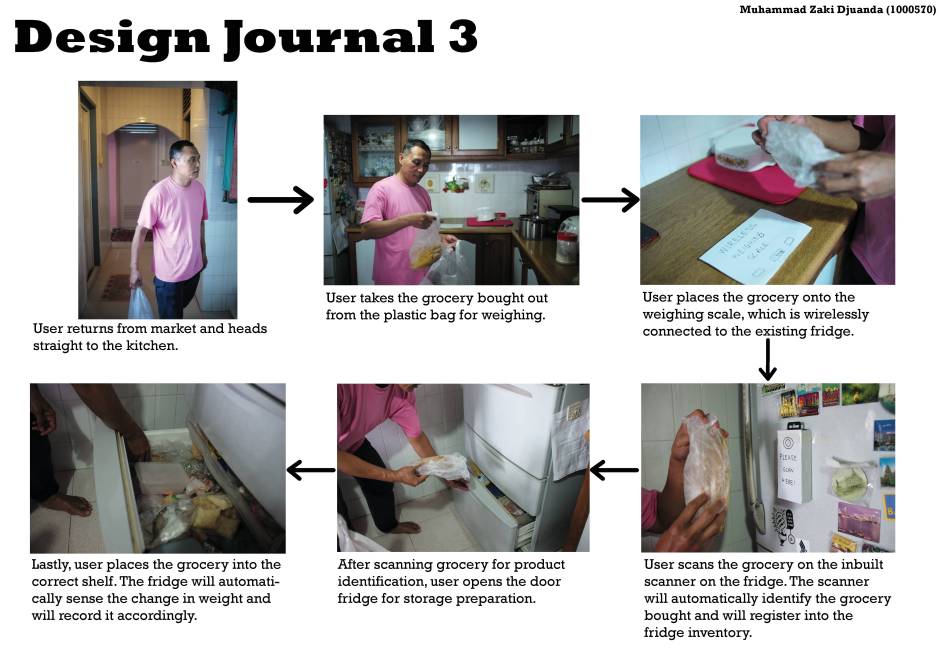
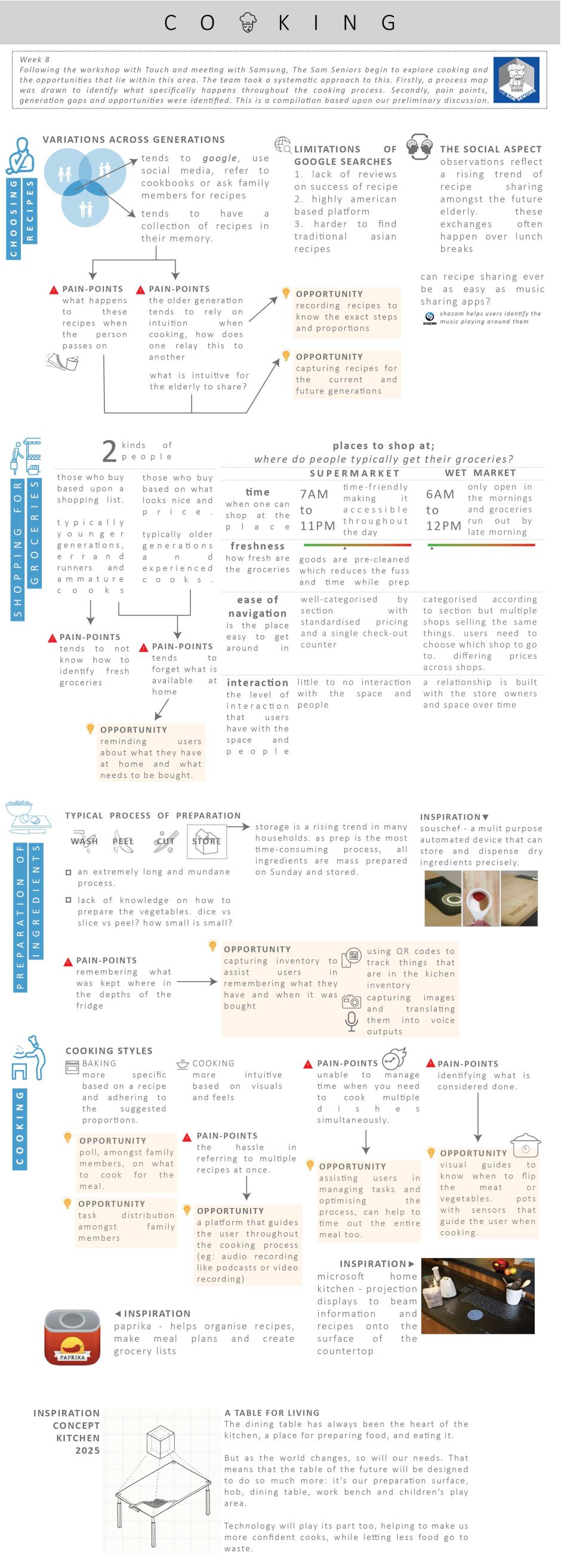





















 Cleaning:
Cleaning:















